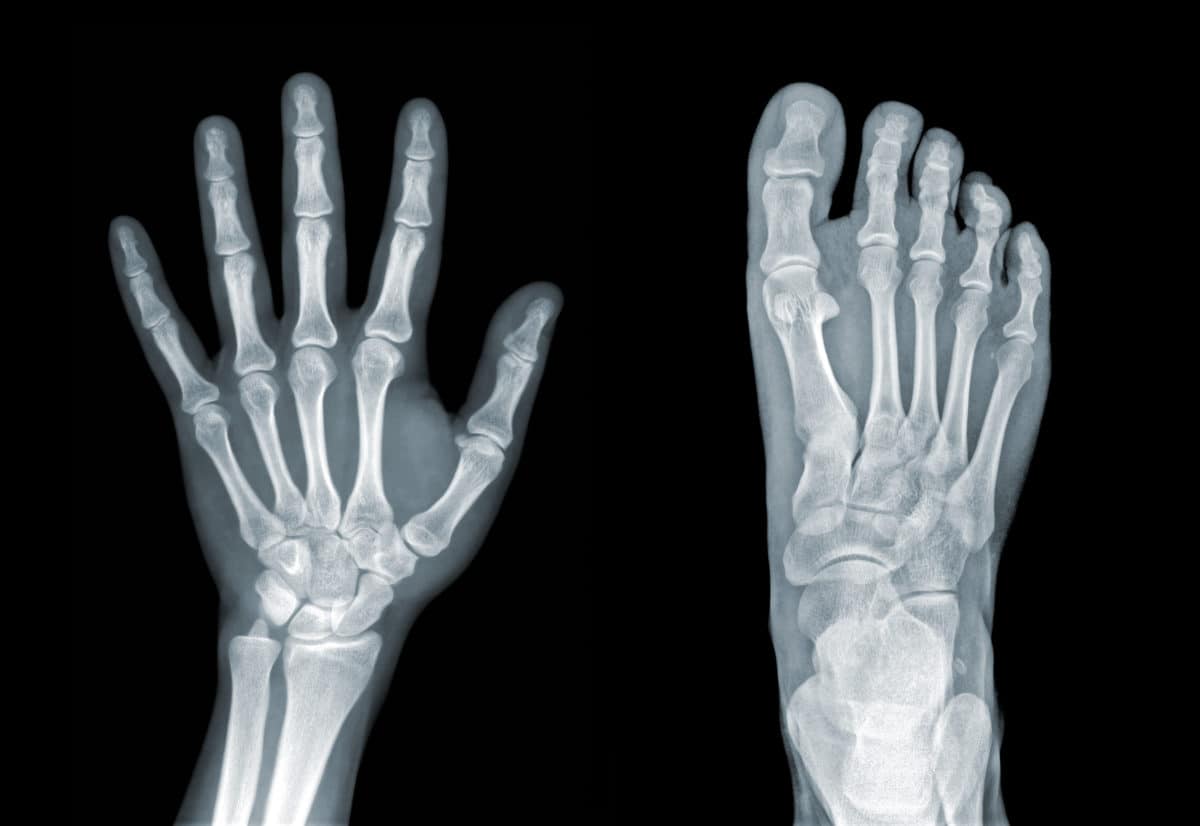In this article, we’re going to take a look at enchondroma vs chondrosarcoma. This are 2 big, scary medical terms. Below we’ll do our best to give you a brief, lay person’s overview of what they are.
Enchondroma vs Chondrosarcoma
If you don’t work in the medical field, you’ve probably never heard of these terms before. At least until you or a family member have one or the other as a possible diagnosis.
There are some similarities between the two. In fact, it can be very difficult even for experts to tell the difference between Enchondroma and the low grade form of Chondrosarcoma.
Even so, they are very different conditions. Both in terms of what they are, who they affect and what the treatment is.
Either way, it can be pretty scary to get diagnosed with either of these two. Especially if you’re hearing about them for the first time.
So what exactly is enchondroma and chondrosarcoma? What is the difference between the two? Let’s get straight to it…
Enchondroma
First, let us discuss what enchondroma is.
This is a bone tumor that develops in the cartilage. They are most common in those between 10 and 20 years old. While it most commonly occurs in the hands or feet, it can occur in the arms and legs too.
The most important thing to know about it is that it is a noncancerous, or benign, tumor.
In most cases someone with enchondroma has few, if any, symptoms. Because of this doctors often only discover them during a normal physical exam or if the tumor results in a fracture.
Diagnosis is usually confirmed through an x-ray, bone scan, MRI and/or CAT scan.
Although medical treatment is not required for enchondroma, there are certain cases where you may want to have it surgically removed. This is because some tumors make the bones weak over time. That can cause bone fractures in the long run.
Now, as we said, this type of tumor is rarely malignant. However, if it does get malignant, it becomes cancerous. If that happens, usually it will turn into chondrosarcoma.
Chondrosarcoma
Chondrosarcoma is a type of bone cancer. While rare overall in the world of cancer, it is the second most common type of primary bone cancer. It usually develops in cartilage cells of the thigh bone, knee, pelvis, and upper arms / shoulders.
Unlike enchondroma, chondrosarcoma shows symptoms. The symptoms often vary depending on where the tumor is. However, here are the most common symptoms:
- Large mass on the affected area or bone
- Gradually increasing pain that gets worse at night
- Swelling in the affected area
- Feeling a lot of pressure around the lump
Chondrosarcoma is often diagnosed by biopsy, an x-ray, via computed tomography scan or CT/CAT scan, magnetic resonance imaging or MRI, and positron emission tomography or PET scan.
While treatment is often not necessary for enchondroma, it is for chondrosarcoma. Your doctor will consider different factors to decide which treatment is best. Factors often include:
- Your preference
- The type, stage and the location of the mass or tumor
- Your age
- The state of your overall health
- Your medical history
- The expectation for the course of the mass or tumor
- Your tolerance for different procedures, medication and therapies.
Surgery is the main type of treatment for those with chondrosarcoma. During surgery the doctor may remove some healthy area near the tumor. This is to make sure they remove all the cancer cells.
However, that means you may lose some bone, cartilage and/or muscle. Additional surgeries/procedures may be needed to repair these areas.
In some cases, radiation therapy may also be used to treat chondrosarcoma.
To this day, there is still no known cause for enchondroma and chondrosarcoma.








